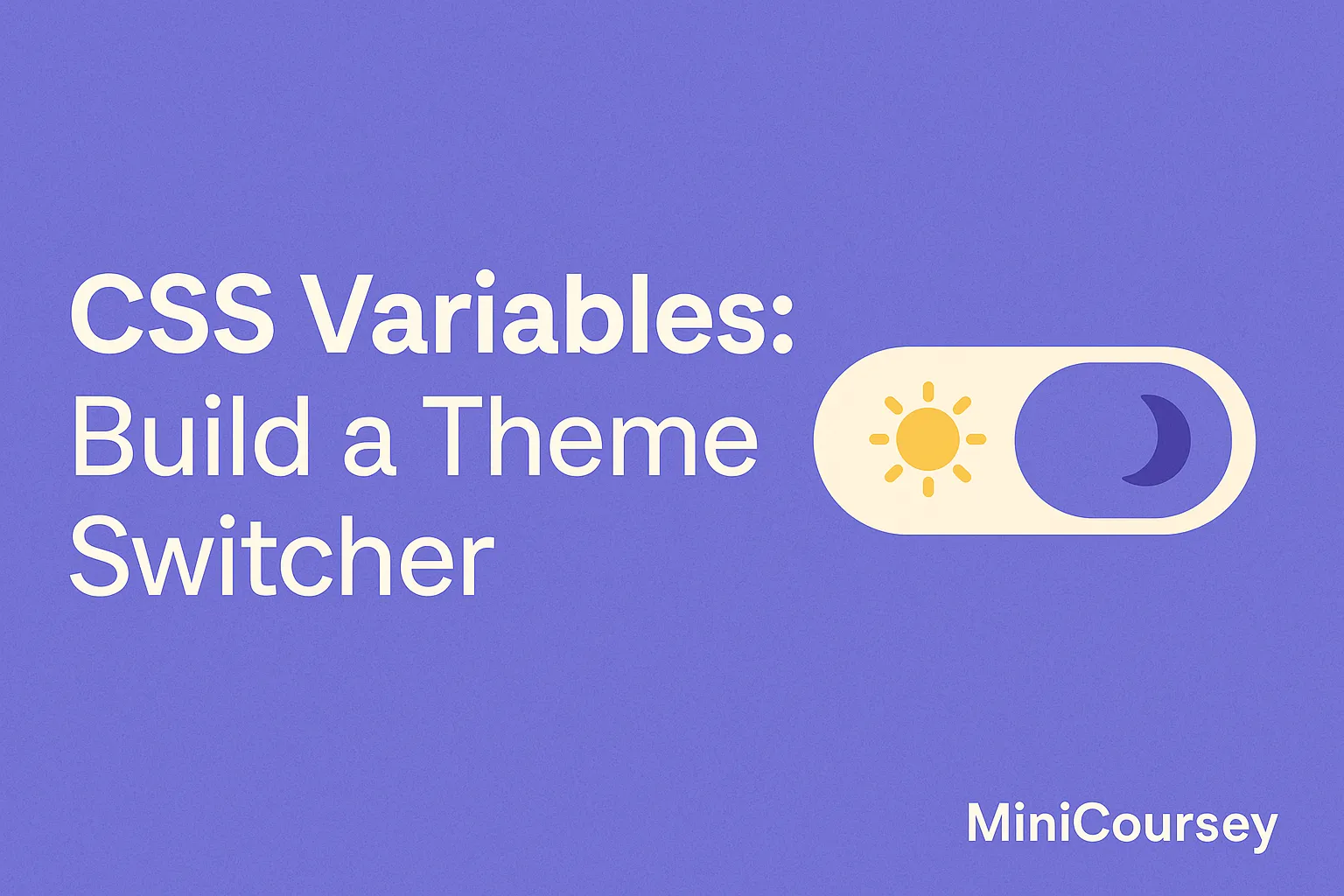Want to add a dark mode or multiple color themes to your site without messy overrides? CSS Variables make it super easy to build a theme switcher with just a bit of extra code. By storing colors and other values in variables, you can update them dynamically — no need for heavy JavaScript frameworks or separate stylesheets. In this MiniCoursey quick guide, you’ll learn how to create a simple theme switcher using CSS Variables and toggle between light and dark mode in seconds.
Why Use CSS Variables for Themes?
Unlike SASS variables, CSS Variables work in the browser at runtime. This means you can redefine them with classes, toggles, or JavaScript to instantly change the look of your whole site.
Define Base Variables
Start with a :root selector for your default theme values.
:root {
–bg-color: #ffffff;
–text-color: #000000;
}
body {
background: var(–bg-color);
color: var(–text-color);
}
Add an Alternate Theme
Create an alternate theme by redefining the same variables under a class — for example, .dark-theme.
.dark-theme {
–bg-color: #121212;
–text-color: #f0f0f0;
}
Toggle Themes with JavaScript
Use a simple script to add or remove the theme class from the <body> tag.
const toggle = document.getElementById(“toggle-theme”);
toggle.addEventListener(“click”, () => {
document.body.classList.toggle(“dark-theme”);
});
💡 Pro Tip: Store theme preference in localStorage so your site remembers the user’s choice!
⚠️ Common Mistake: Forgetting to use variables for all theme-dependent values will leave stray colors behind.
FAQ
Q: Can I animate theme changes?
A: Yes! Add transitions to smooth out background or color changes.
Q: Do I need extra libraries?
A: No — you can build a clean switcher with plain CSS and a few lines of JS.
Related Link
👉 Check out previous: CSS Clip-Path — Create Custom Shapes
Where to Learn More
Experiment with multiple color schemes and store user preferences. MDN’s CSS Variables guide has great details for advanced tricks.
Conclusion
Congrats — you now know how to build a theme switcher with CSS Variables! It’s one of the simplest ways to add light/dark modes or custom themes without bloating your code.
✨ Bookmark MiniCoursey for more quick & free mini courses!

